43 chapter 6 chemical bonding worksheet answers
PDF 6 Chemical Bonding CHAPTER 6 REVIEW Chemical Bonding SECTION 3 SHORT ANSWER Answer the following questions in the space provided. 1. a The notation for sodium chloride, NaCl, stands for one (a) formula unit. (c) crystal. (b) molecule. (d) atom. 2. d In a crystal of an ionic compound, each cation is surrounded by a number of (a) molecules. (c) dipoles. (b) positive ions. (d) negative ions. 3. b Compared with the ... PDF Chapter 7 Chemical Bonding and Molecular Geometry - University of North ... Chapter 7 Chemical Bonding and Molecular Geometry Figure 7.1 Nicknamed "buckyballs," buckminsterfullerene molecules (C60) contain only carbon atoms. Here they are shown in a ball-and-stick model (left). These molecules have single and double carbon-carbon bonds arranged to ... Answer: K+: [Ar], Mg2+: [Ne] 348 Chapter 7 Chemical Bonding and ...
Bonding__Worksheet_5.docx - Chapter 6: Chemical Bonding... Chapter 6: Chemical Bonding Worksheet 5 Write the answers to the following questions Compare and contrast ionic bonding and covalent bonding. Why do most atoms form chemical bonds? Compound A has a higher melting point and boiling point than compound B. At the same temperature,compound B vaporizes faster than compound A.
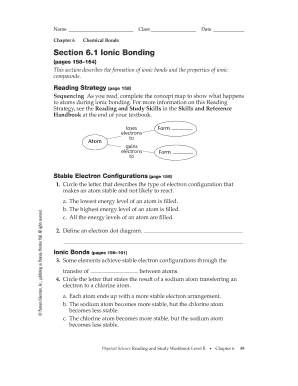
Chapter 6 chemical bonding worksheet answers
PDF CHAPTER 6 REVIEW Chemical Bonding - Weebly In the first diagram, draw a weak metallic bond; in the second, show a metallic bond that would be stronger. Be sure to include nuclear charge and number of electrons in your illustrations. a. b. weak bond strong bond . Note: In the strong bond, the charge on the nucleus and the number of electrons must be greater than in the weak bond. 11. PDF Chapter 6 Chemical Bonding Worksheet Answers Chapter 6 Chemical Bonding Worksheet Answers Author: parked-dvl.zoneedit.com-2022-09-01T00:00:00+00:01 Subject: Chapter 6 Chemical Bonding Worksheet Answers Keywords: chapter, 6, chemical, bonding, worksheet, answers Created Date: 9/1/2022 8:28:48 PM PDF Chapter 6 section 2 chemical bonding worksheet answers Chapter 6 section 2 chemical bonding worksheet answers Electronegativity is a measure of the attraction of an atom for the electrons in a chemical bond. The higher the electronegativity of an atom, the greater its attraction for bonding electrons. Electronegativity is related to ionization energy.
Chapter 6 chemical bonding worksheet answers. Chapter 6 Chemical Bonds WordWise Flashcards | Quizlet A type of bond in which two atoms share a pair of valence electrons. Molecule. A neutral group of atoms that are joined together by one or more covalent bonds. Polar. A term describing a covalent bond in which electrons are not shared equally. Polyatomic. An ion that contains a covalently bonded group of atoms. Anion. PDF CHAPTER 6 Chemical Bonding - St. Charles Parish Public School System CHAPTER 6 Section 1Introduction to Chemical Bonding What is a chemical bond and why does it form? Section 2Covalent Bonding and Molecular Compounds What is a molecular formula? What are the characteristics of a covalent bond? How does a Lewis structure represent a molecule? Section 3Ionic Bonding and Ionic Compounds What is a crystal lattice? Chapter 6 Review Chemical Bonding Section 5 Answer Key CHAPTER 6 REVIEW Chem- ical Bonding SECTION 1. SHORT ANSWER Answer the following questions in the space provided. 1. a A chemical bond between. In Metals Section Review Answers Key/RDXW48 6_CH 6 OLD QUIZZES With Answer Key.pdf 5. The measure of an atom's ability to attract electrons is its ... Chapter 6 Chemical Reactions Equations Worksheet Answers Access Free Chapter 6 Chemical Reactions Equations Worksheet Answers Reaction Engineering An Introduction to Chemistry The book is a short primer on chemical reaction rates based on a six-lecture first-year undergraduate course taught by the author at the University of Oxford. The book explores the various factors that determine how
Chapter 6 Chemical Bonding Worksheet Answers [PDF] - api.it.aie Merely said, the Chapter 6 Chemical Bonding Worksheet Answers is universally compatible with any devices to read Biology for AP ® Courses Julianne Zedalis 2017-10-16 Biology for AP® courses covers the scope and sequence requirements of a typical two-semester Advanced Placement® biology course. The text provides comprehensive coverage of ... PPTX Chapter 6 - Chemical Bonds - Henry County Schools A chemical bond is the force that holds atoms or ions together as a unit. An ionic bond is the force that holds cations and anions together. An ionic bond forms when electrons are transferred from one atom to another. Formation of Ionic Bonds When an ionic bond is formed, electrons are transferred until each atom has a full outer energy level. PDF Chapter 6 Review Chemical Bonding Worksheet Answers Chapter 6 Chemical Bonding Worksheet Answers - Page 5/11. Read Online Chapter 6 Review Chemical Bonding Worksheet Answers Nidecmege CHAPTER 6 REVIEW Chemical Bonding SECTION 2 SHORT ANSWER Answer the following questions in the space provided. 1. Use the concept of potential energy to describe how a Covalent Bonding Answers Worksheets - K12 Workbook Worksheets are Covalent bonding work with answers, Covalent bonding work answers, Chapters 6 and 7 practice work covalent bonds and, Chemical bonding work answers, University of texas at austin, Unit 3, Chapter 7, Chapter 8 covalent bonding and molecular structure. *Click on Open button to open and print to worksheet. 1.
Covalent Bonding Worksheets - K12 Workbook Worksheets are Covalent bonding work, Covalent, Covalent bonds and lewis structures, Chemical bonding, University of texas at austin, Chapter 8 covalent bonding work answer key, Basic concepts of chemical bonding, Chapter 8 covalent bonding work answers. *Click on Open button to open and print to worksheet. 1. Covalent Bonding Worksheet. PPTX CHAPTER 6 TEST: CHEMICAL BONDING REVIEW SHEET - Licking Heights Local ... CHAPTER 6 TEST: CHEMICAL BONDING REVIEW SHEET 1. What are the 2 main types of bonds that we have learned about? 2. During an ionic bond, valence electrons are_____ 3. During a covalent bond, valence electrons are_____ 4. What periodic trend can be used to determine the type of bond that elements will form? 1. IONIC AND COVALENT 2. chemistry worksheet.docx - CHAPTER 6 REVIEW Chemical... CHAPTER 6 REVIEW Chemical Bonding SECTION 3 SHORT ANSWER Answer the following questions in the space provided. 1. _A_ The notation for sodium chloride, NaCl, stands for one (a)formula unit. (c) crystal. (b)molecule. (d) atom. ( a ) formula unit . ( c ) crystal . ( b ) molecule . ( d ) atom . 2. Access Free Chemical Bonding Worksheet Answers Chemical Bonding Worksheet Answers, as one of the most practicing sellers here will completely be along with the best options to review. DSMY7Z - MERCER CARNEY ... Chapter 6.1 - Chemical Bonds: Ionic Bonding. Learn vocabulary, terms, and more with flashcards, games, and other study tools.
chemical bonding worksheet Covalent bonding task worksheet and exam questions | Teaching Resources. 16 Images about Covalent bonding task worksheet and exam questions | Teaching Resources : Chemical Bonding Worksheet by Biology Buff | Teachers Pay Teachers, Chapter 6 Chemical Bonding Worksheet Answers - Escolagersonalvesgui and also Latest Naming Ionic Compounds Flowchart | Naming compounds worksheet.
chemical bonding practice worksheet Answers : Chemical Bonding Ionic And Covalent Worksheet Answers - kidsworksheetfun, Homework Worksheets: Ionic and Covalent Bonding - Set of 6! Answers and also Chemical Bonding Chapter 6 Review Worksheet Answers - Vegan Divas NYC.
Chapter 6 Chemical Bonding Section 4 Worksheet Answers Download Ebook Chapter 6 Chemical Bonding Section 4 Worksheet Answers dynamics of bond rearrangements at surfacesThis fully updated Eighth Edition of CHEMICAL PRINCIPLES provides a unique organization and a rigorous but understandable introduction to chemistry that emphasizes conceptual understanding and the importance of models. Known for
PDF Chemistry chapter 6 chemical bonding test answers - Weebly 1 CHAPTER 6 TEST: CHEMICAL BONDING REVIEW SHEET 2 1. What are the 2 main types of bonds that we have learned about? 2. During an ionic bond, valence electrons are_____ 3. During a covalent bond, valence electrons are_____ 4. What periodic trend can be used to determine the type of bond that elements will form? 1. IONIC AND COVALENT 2.
Section 6.2 Ionic Bonding Answer Key Pdf - myilibrary.org 6.2 Covalent Bonding PPT - Lyndhurst School District. Mar 31, 2014 ... CHAPTER 6: CHEMICAL BONDS. 6.1 IONIC BONDING. 6.2 COVALENT BONDING. 6.3 NAMING COMPOUNDS AND WRITING FORMULAS. 6.4 THE STRUCTURE OF METALS.
PDF Chapter 6 section 2 chemical bonding worksheet answers Chapter 6 section 2 chemical bonding worksheet answers Electronegativity is a measure of the attraction of an atom for the electrons in a chemical bond. The higher the electronegativity of an atom, the greater its attraction for bonding electrons. Electronegativity is related to ionization energy.
PDF Chapter 6 Chemical Bonding Worksheet Answers Chapter 6 Chemical Bonding Worksheet Answers Author: parked-dvl.zoneedit.com-2022-09-01T00:00:00+00:01 Subject: Chapter 6 Chemical Bonding Worksheet Answers Keywords: chapter, 6, chemical, bonding, worksheet, answers Created Date: 9/1/2022 8:28:48 PM
PDF CHAPTER 6 REVIEW Chemical Bonding - Weebly In the first diagram, draw a weak metallic bond; in the second, show a metallic bond that would be stronger. Be sure to include nuclear charge and number of electrons in your illustrations. a. b. weak bond strong bond . Note: In the strong bond, the charge on the nucleus and the number of electrons must be greater than in the weak bond. 11.
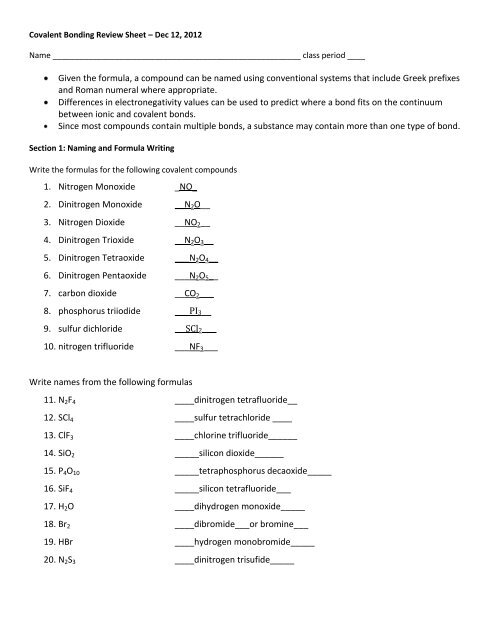


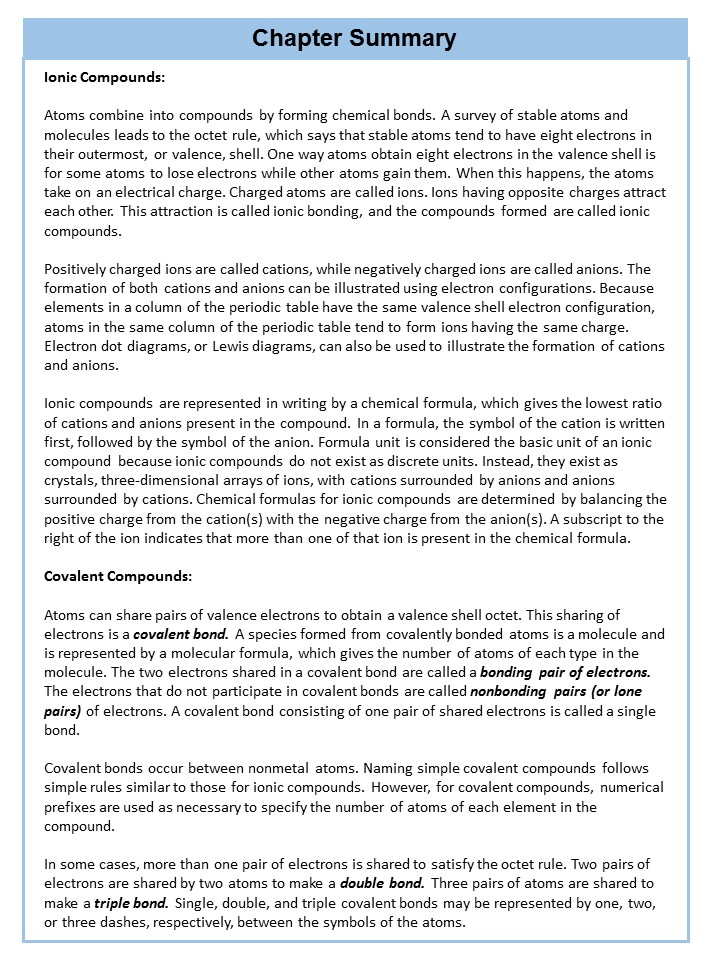
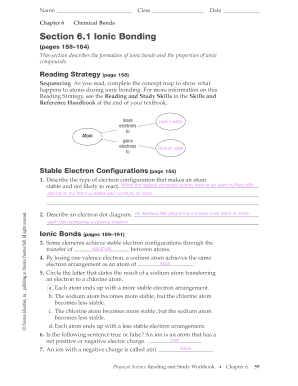
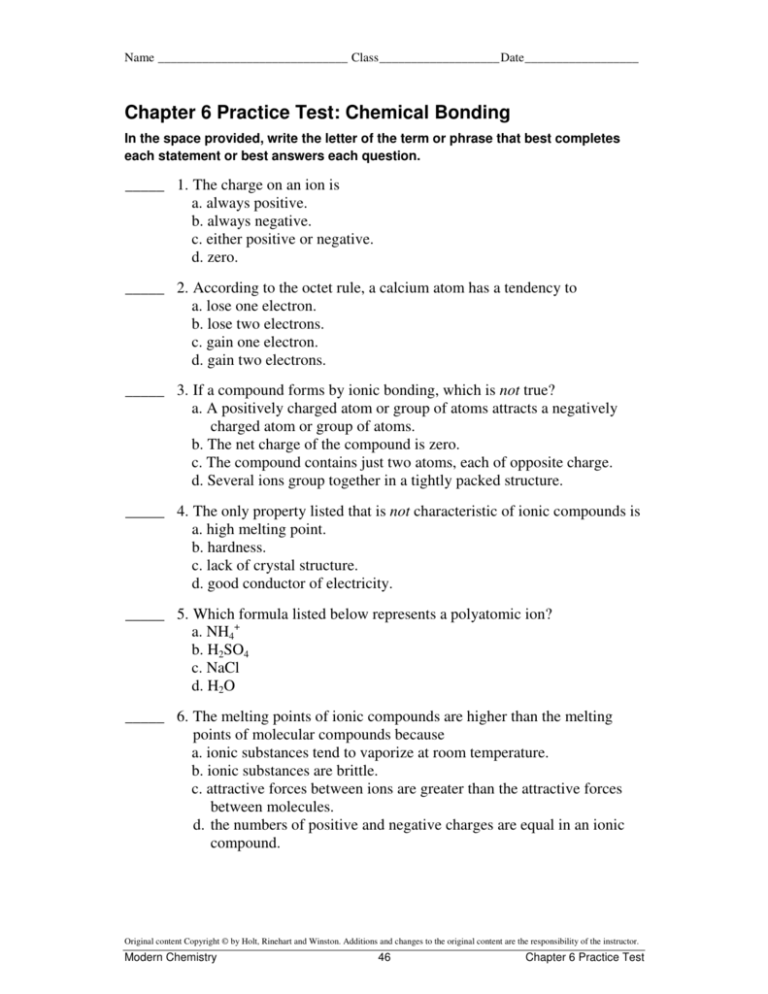




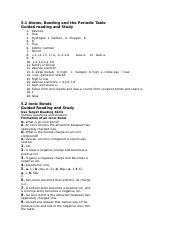
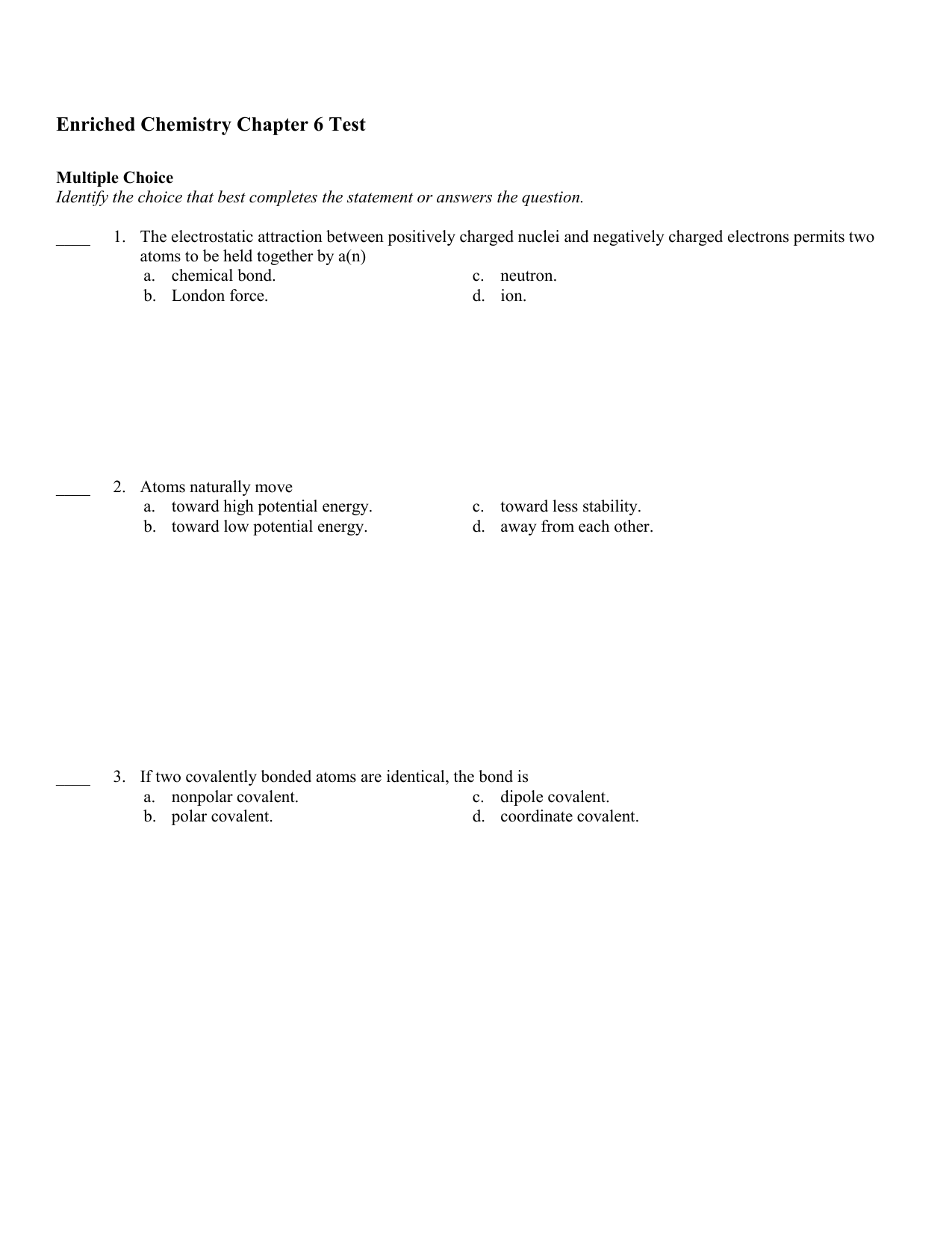


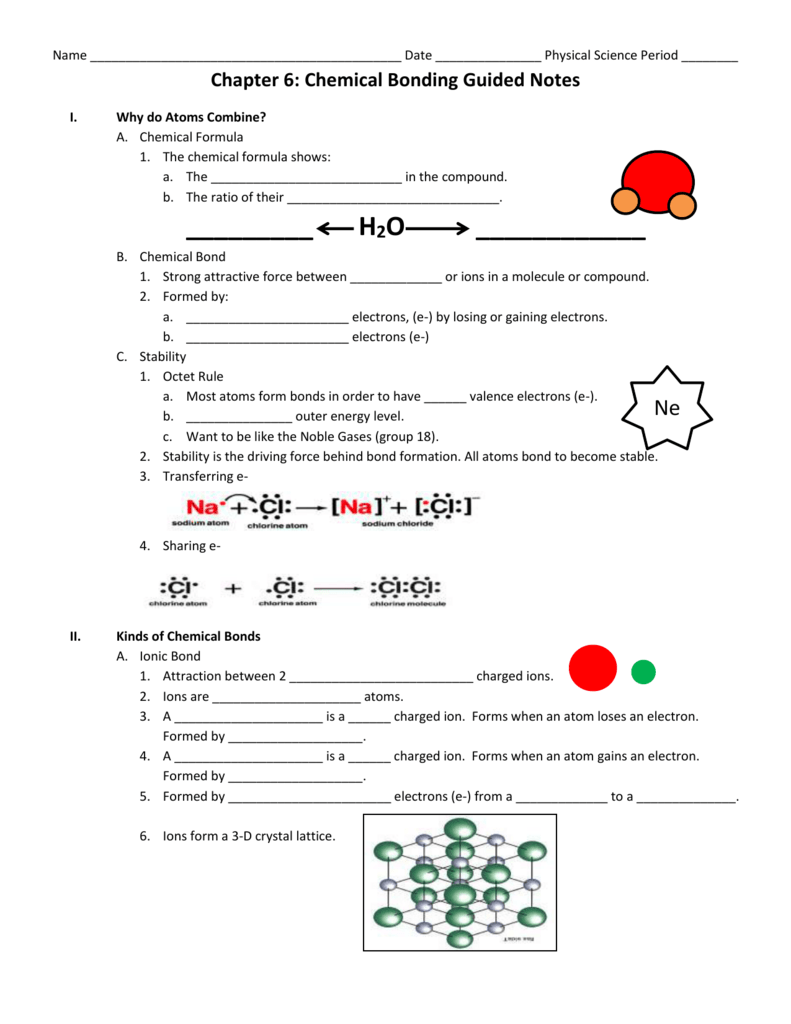

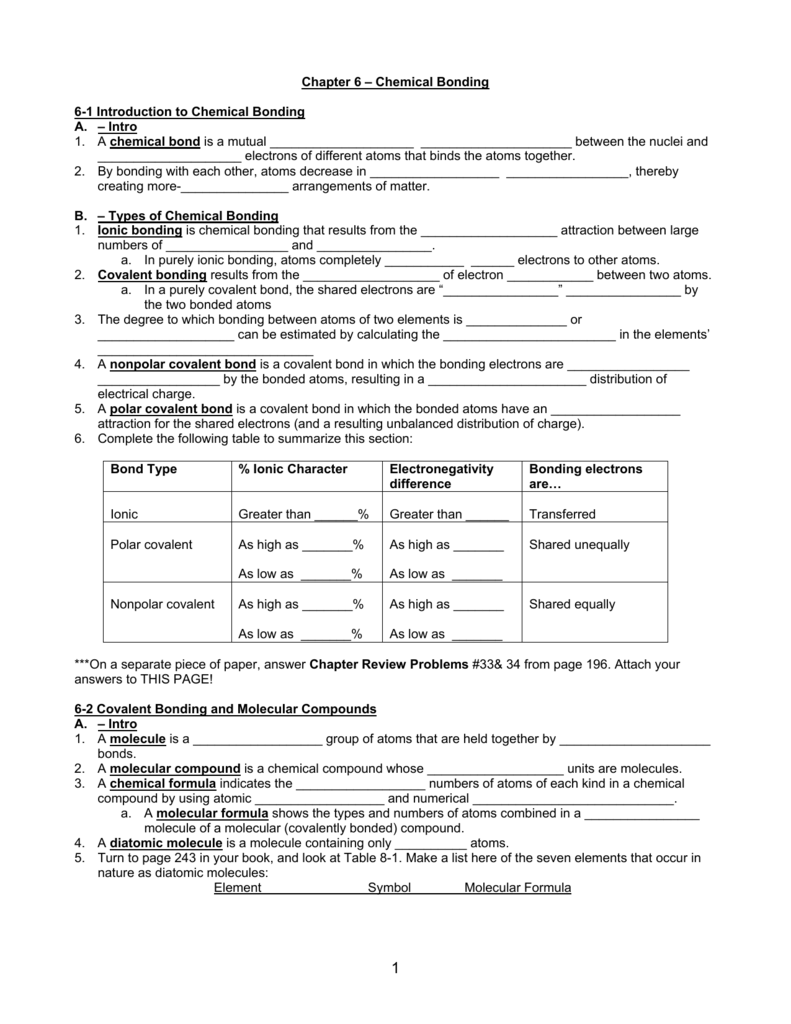

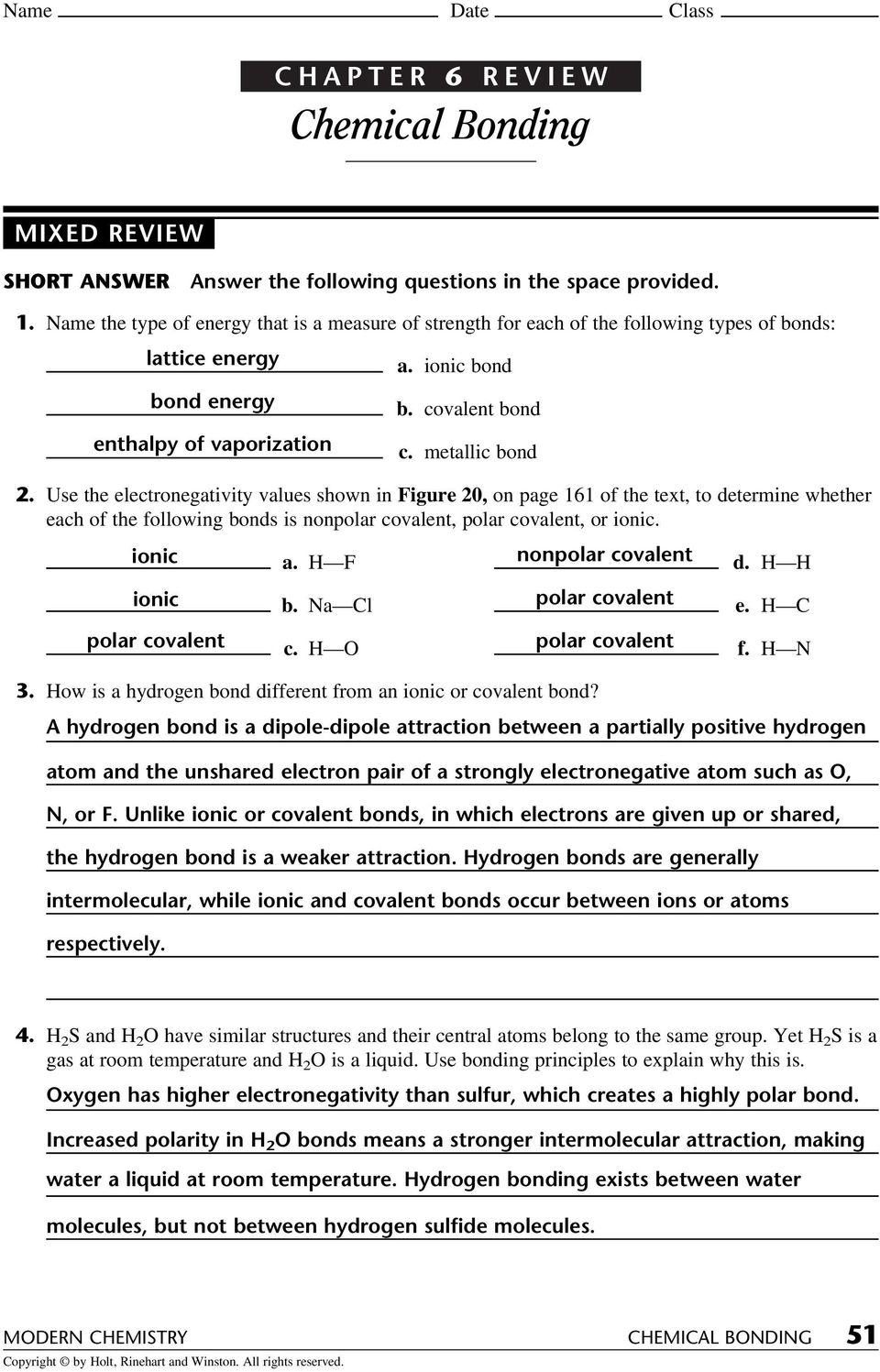

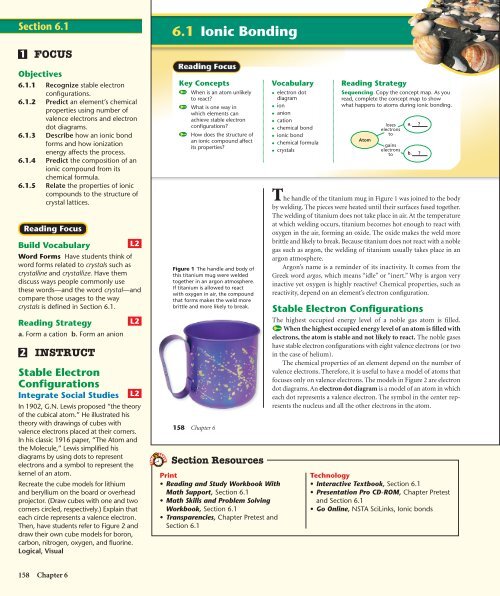

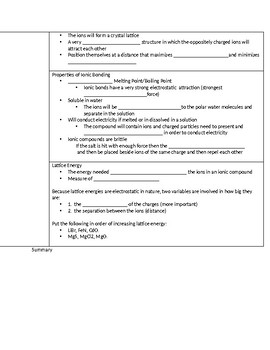

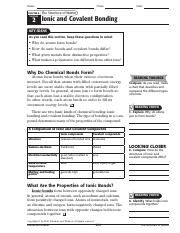




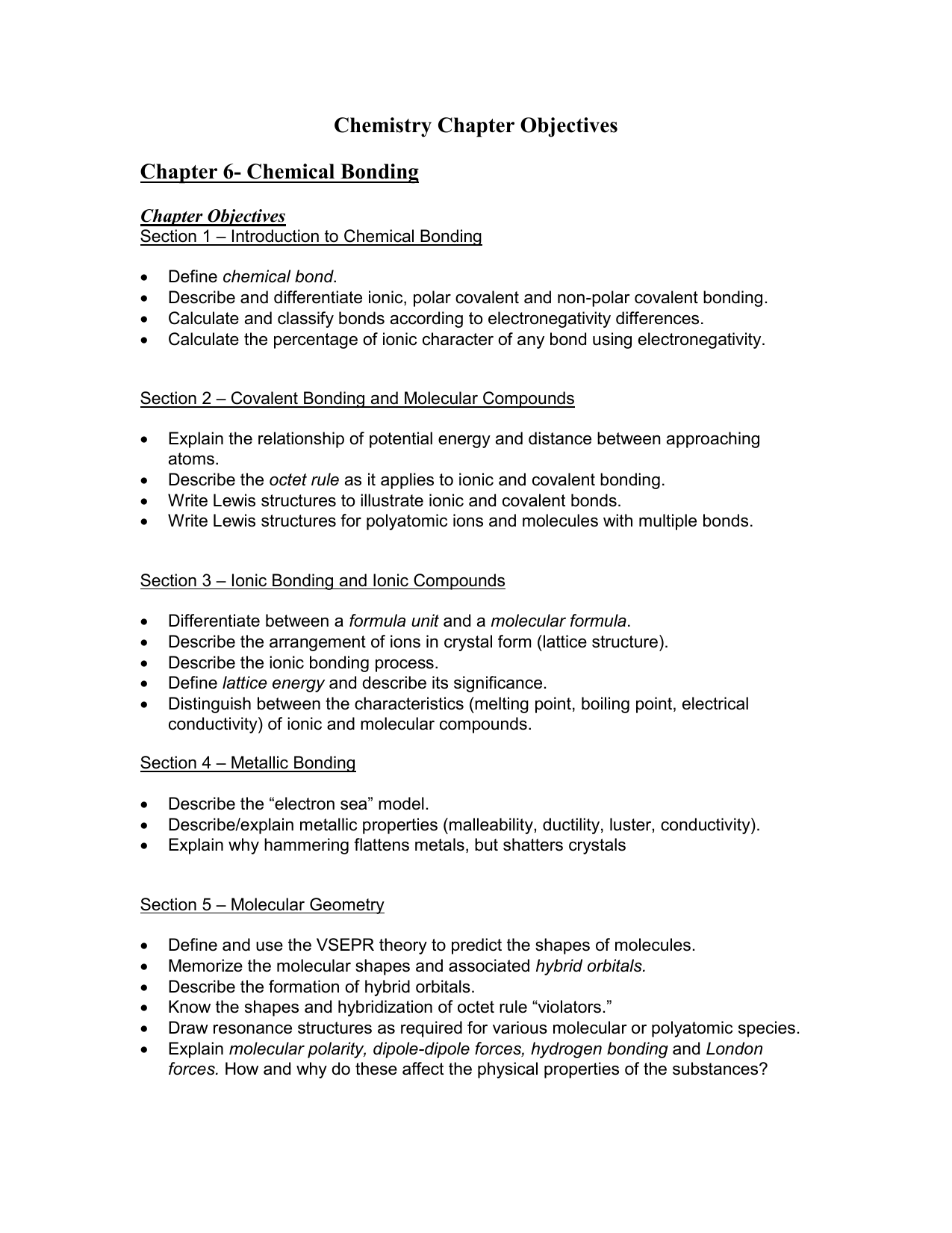


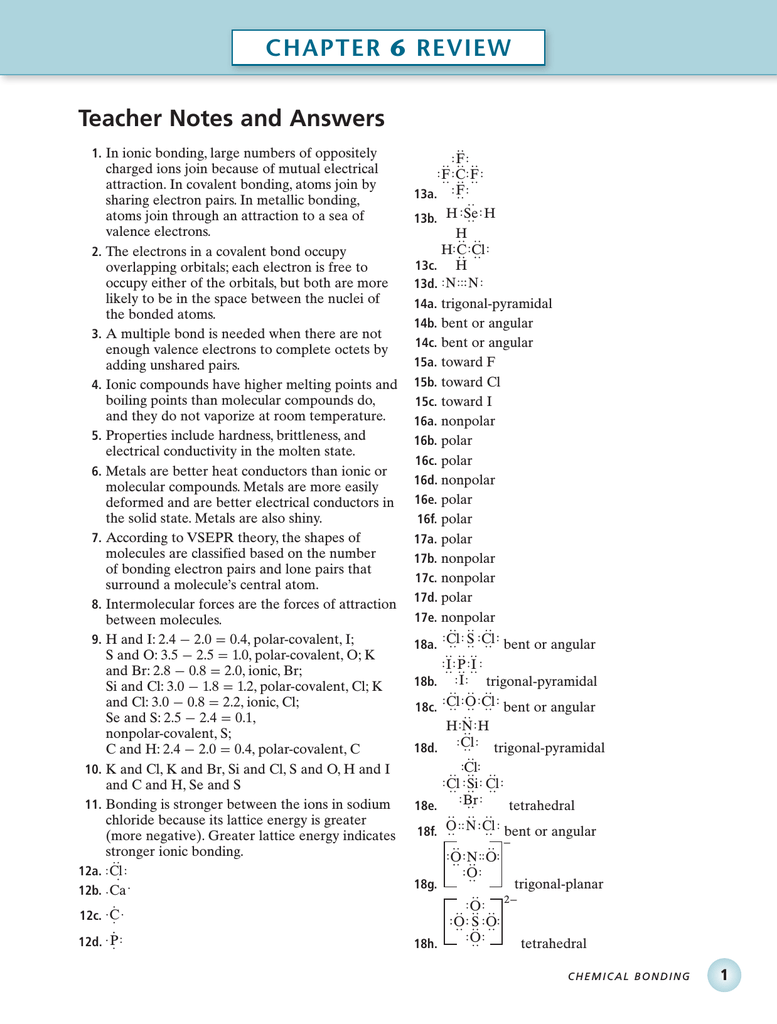
0 Response to "43 chapter 6 chemical bonding worksheet answers"
Post a Comment